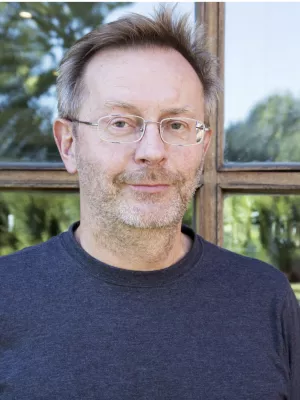
Ronny Berndtsson
Professor, Dep Director, MECW Dep Scientific Coordinator

DynSus : Dynamic sustainability assessment in groundwater remediation practice
Author
Summary, in English
Decision-making processes for clean-up of contaminated sites are often highly complex and inherently uncertain. It depends not only on hydrological and biogeochemical site variability, but also on the associated health, environmental, economic, and social impacts of taking, or not taking, action. These variabilities suggest that a dynamic framework is required for promoting sustainable remediation. For this, the decision support system DynSus is presented here for integrating a predeveloped contaminant fate and transport model with a sustainability assessment tool. Implemented within a system dynamics framework, the new tool uses model simulations to provide remediation scenario analysis and handling of uncertainty in various data. DynSus was applied to a site in south Sweden, contaminated with pentachlorophenol (PCP). Simulation scenarios were developed to enable a comparison between alternative remediation strategies and combinations of these. Such comparisons are provided for selected sustainability indicators and remediation performance (in terms of concentration at the recipient). This leads to identifying the most critical variables to ensure that sustainable solutions are chosen. Simulation results indicated that although passive practices, e.g., monitored natural attenuation, were more sustainable at first (5–7 years after beginning remediation measures), they failed to compete with more active practices, e.g., bioremediation, over the entire life cycle of the project (from the beginning of remedial action to achieving the target concentration at the recipient). In addition, statistical tools (clustering and genetic algorithms) were used to further assess the available hydrogeochemical data. Taken together, the results reaffirmed the suitability of the simple analytical framework that was implemented in the contaminant transport model. DynSus outcomes could therefore enable site managers to evaluate different scenarios more quickly and effectively for life cycle sustainability in such a complex and multidimensional problem.
Department/s
- Division of Water Resources Engineering
- Centre for Advanced Middle Eastern Studies (CMES)
- MECW: The Middle East in the Contemporary World
- Broadband Communication
Publishing year
2022
Language
English
Publication/Series
Science of the Total Environment
Volume
832
Links
Document type
Journal article
Publisher
Elsevier
Topic
- Environmental Management
Keywords
- Contaminated sites
- Groundwater
- Sustainability assessment
- Sustainable remediation
- System dynamics
Status
Published
Research group
- Broadband Communication
ISBN/ISSN/Other
- ISSN: 0048-9697

